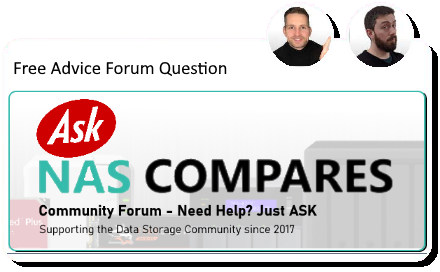6 hours ago
Hello, I've started reading and watching your videos and they are detailed and great, thank you!
I had some questions.
My primary use case is backing up photos and videos from my phone, sharing them with friends and family globally. Also storage of my important documents, files, resumes, taxes, stuff like that.
Also, what I'd like to do is have my brother in another state have a NAS that we can back up to each other for catastrophic loss mitigation.
I do not anticipate streaming content from it, as I dont even quite understand how or why someone would do that. If not using a DVD/Blueray, nor Netflix/streaming platform, where and why would you stream content? Something illegally downloaded? I don't do that.
Looking for advice what sort of hardware you'd recommend focusing on VERY COTS products. Like a used Dell 3050 MT or XPS 8900 or something Dell/HP that can be bought used, cheap.
If i'm not editing and streaming videos, do I NEED SSD for chache?
I had some questions.
My primary use case is backing up photos and videos from my phone, sharing them with friends and family globally. Also storage of my important documents, files, resumes, taxes, stuff like that.
Also, what I'd like to do is have my brother in another state have a NAS that we can back up to each other for catastrophic loss mitigation.
I do not anticipate streaming content from it, as I dont even quite understand how or why someone would do that. If not using a DVD/Blueray, nor Netflix/streaming platform, where and why would you stream content? Something illegally downloaded? I don't do that.
Looking for advice what sort of hardware you'd recommend focusing on VERY COTS products. Like a used Dell 3050 MT or XPS 8900 or something Dell/HP that can be bought used, cheap.
If i'm not editing and streaming videos, do I NEED SSD for chache?





